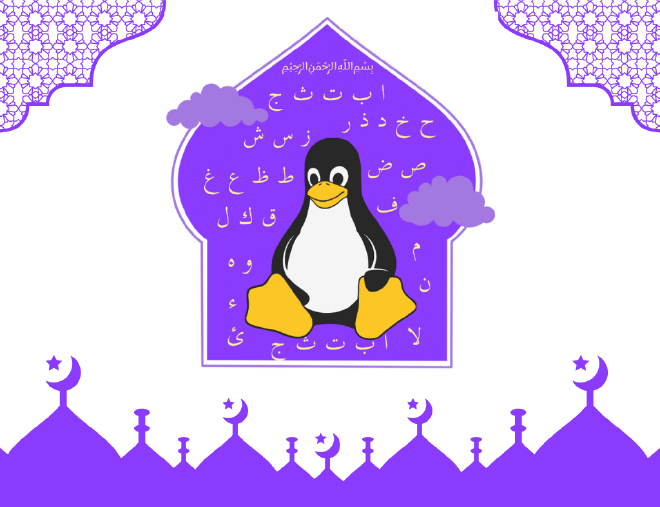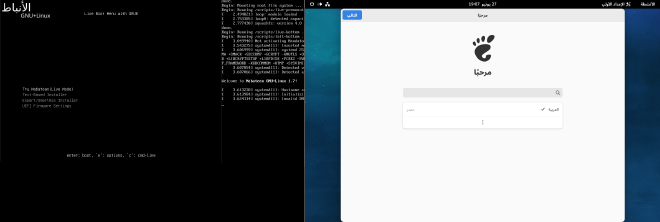Linux in the Arab and Islamic World

Linux based systems are famous for their customizability and flexibility to cater to the user’s needs, and the existence of different types of Linux (known as “distributions” or “distros”) is considered one of its defining features, as is what might seem an infinite amount of distros, so how did the Arab world leave its touch here?
Linux distros have competed over the years, but distros such as “Ubuntu” or “Fedora” attracted more attention than their counterparts and began to serve as a basis for building other distros, whose basic applications are derived from one of the two aforementioned distros, and the rest is customized to cater to the needs of a specific community.
So, after we talked about distros in general, let’s zoom in on the Arab and Islamic presence, and the most famous distros directed specifically towards the Arab Muslim user, with applications that make it easier for them to adhere to their faith and make religious actions part of their daily routine.
History #
Haydar Linux #
“Haider Linux” might be the first Arabic-themed distro released to the public, as the first beta versions of this Fedora-based system were published in 2002; however, they were barely different from Fedora except for slight support for Arabic. Unfortunately, the project was abandoned shortly after.
Sabily Linux #

“Sabily Linux”, which was released in 2007, is an Ubuntu-based distro directed exclusively and primarily to the Arab Muslim community, and it is the first distro that had an Islamic theme to it. Unlike “Haydar Linux”, the distro came with many additions to its parent distro, specifically in terms of Islamic applications.
The last version of Sabily was released in 2013 and is still available today with its Islamic software, such as Qur’an browsers, the “Thawab Library”, the comprehensive Islamic library, the “Minbar” program for prayer times, or the “Munajah” program for the Hadiths, a Hijri calendar, and many others.
Helal Linux #

“Helal Linux” did not just focus on Arabic and Islamic content, instead it targeted users from all backgrounds. The “Helal Linux” team provided continuous updates to optimize the system, improve performance, and fix all user-reported issues.
Development of “Helal Linux” officially discontinued in 2014, but Mohammad Hani Sabbagh still contributes to supporting Arabic within the open-source community to this day.
Nowadays #
Today, the trend of Islamic distros is mostly dead, and it’s rare to find a maintained distro that’s dedicated to Arabic support, mostly because Arabic has been adopted and supported to a satisfactory degree by most major distros, so there is no need to create your own distro for that anymore; Although to this day there are many maintained distros of Arab origin, such as:
You can read more about them in a blog post by our friends at “Linux Arabia”.
Nabatean GNU/Linux #
Despite it being rare nowadays to find distros that has Arabic support as a main purpose, but that doesn’t mean they don’t exist, and the best of those distros might be “Nabatean GNU/Linux” developed and maintained by a Jordanian who goes by “ContractOver”.

Finally, all of these distros we mentioned are just the tip of the iceberg. Linux is all about being open, allowing any developer to use the distro that suits them as a basis to come up with their own distro, which serves a specific purpose and targets a specific audience, This dream for the freedom of development wouldn’t have come true if the world decided to stick with UNIX, which believed that limiting the freedom of development was a better and more effective way to do things. The idea of distros wasn’t even imaginable, operating systems were issued in versions, and the user is forced to upgrade when the support ends, regardless of their preferred UI or programs.